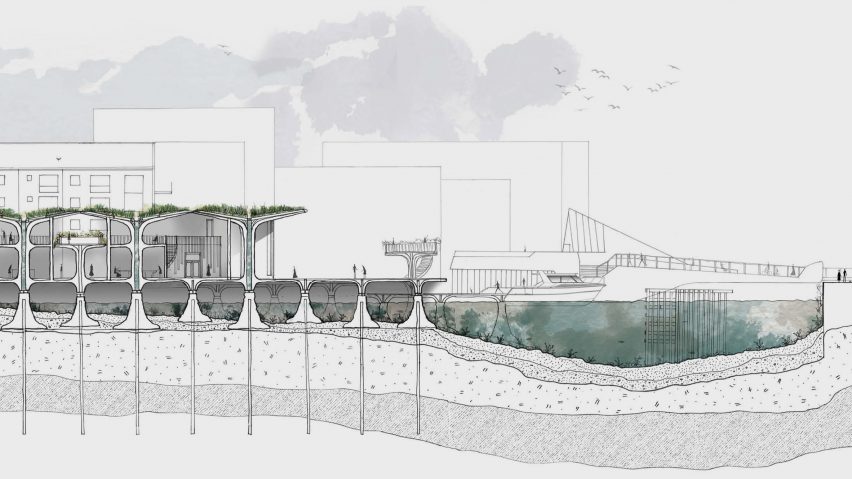
Six architecture student projects that respond to rising sea levels and flooding
Dezeen School Shows: we've rounded up six student projects showcased on Dezeen School Shows that present design solutions to rising sea levels and flooding.
In response to widespread changes in weather caused by the climate crisis, a number of young designers have chosen to focus their university studies on designing ways to future-proof the built environment against the risk of floods and theorise ways to harness surplus water.
This roundup of projects includes a salt marsh intervention in the UK, a housing strategy that reduces the risk of flooding on a riverbank in Brazil, and a water management system in Iran that adopts ancient water collection methods.
The selection of projects comes from architecture students studying at global universities, including Oxford Brookes University, University of Brighton, University of Applied Arts Vienna, University of Waterloo in Canada, and USA-based institutions Tulane University and Washington University in St Louis.
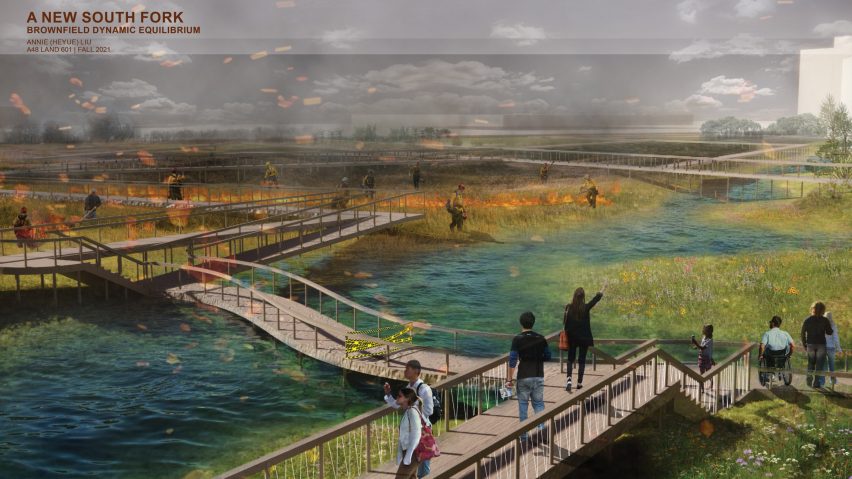
Washington University in St Louis student Heyue Liu designed a landscape architecture project that aims to combat flooding and pollution at Bubbly Creek — the South Fork of the South Branch on the Chicago River.
According to Liu, the New South Fork scheme imitates the reversing of the flow of water at the Chicago River by using rainy-season floods — a strategy that was previously adopted by the local government to purify water in Lake Michigan.
"The imitated mechanism turns the water on the two parts of the site into a microcosm of history, echoing the river history museum transformed from an old factory on site," said Liu.
"The project is also ambitiously committed to improving flood controls by adding a retention pond on the brownfield at the source. The renovated site connects the residential area to the new South Fork and Bubbly Creek, encouraging public engagement."
Student: Heyue Liu
School: Washington University in St Louis
Course: Landscape Architecture Design V, Master of Landscape Architecture
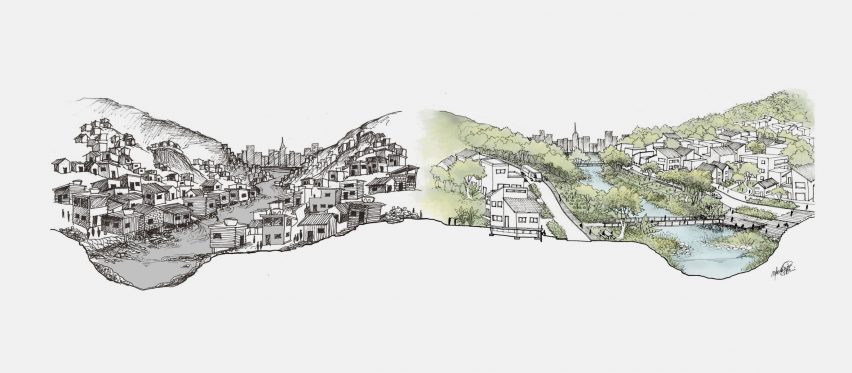
Located in Duque de Caxias City, Brazil, University of Waterloo student Maria Luiza de Souza Oliveira Ottoni designed a housing project for the settlements along the Roncador River.
Recognising that the river is prone to severe annual floods, Souza Oliveira Ottoni aimed to create a long-term strategy that can adapt to flooding and allow the community to grow and thrive.
"By acknowledging water as an ally, this thesis proposes a comprehensive solution for flood-risk reduction through an integrated approach in design," said de Souza Oliveira Ottoni.
"It connects a system of nature-based solutions along the watershed with amphibious incremental housing to build an affordable, evolutionary, and flood-adaptive community that empowers their resilience."
Student: Maria Luiza de Souza Oliveira Ottoni
School: University of Waterloo
Course: Master of Architecture (MArch)
Mechanomorph (Hydro)City – The Future of Bangkok by Witchaya Jingjit
Witchaya Jingjit, a Master of Architecture student at the University of Applied Arts Vienna, created a project that intends to protect the city of Bangkok against the increasing risk of flooding.
Jingjit conceived the urban proposal by combining both technological and natural methodologies.
"The hypothesis is a concept of a symbiotic and poetic way of working hand in glove with nature and technology in order to create a new human-made ecosystem by rethinking urban intervention design," said Jingjit.
Student: Witchaya Jingjit
School: University of Applied Arts Vienna
Course: Master of Architecture
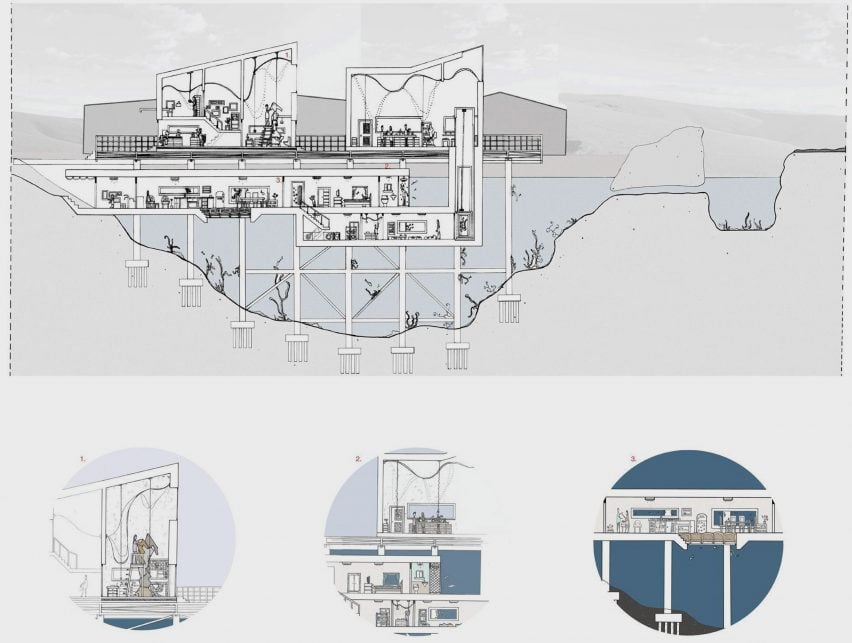
Above and Below by Lauren Goodchild
University of Brighton student Lauren Goodchild designed an artist's studio and workshop that is partially submerged in the River Ouse, which experiences flooding caused by climate change.
Located within the Phoenix Industrial Estate in Lewes, the project aims to differentiate work and home life while also creating atmospheric spaces that are informed by the surrounding landscape.
"The proposal has a close relationship to the environment in which it sits, due to it being partially submerged underwater," said Goodchild.
"With climate change and the construction industry's contribution to it in mind, this project tries to be as sustainable as possible by implementing the idea of reuse in repurposing steel beams columns in the surrounding buildings."
Student: Lauren Goodchild
School: University of Brighton
Course: BA(Hons) Architecture
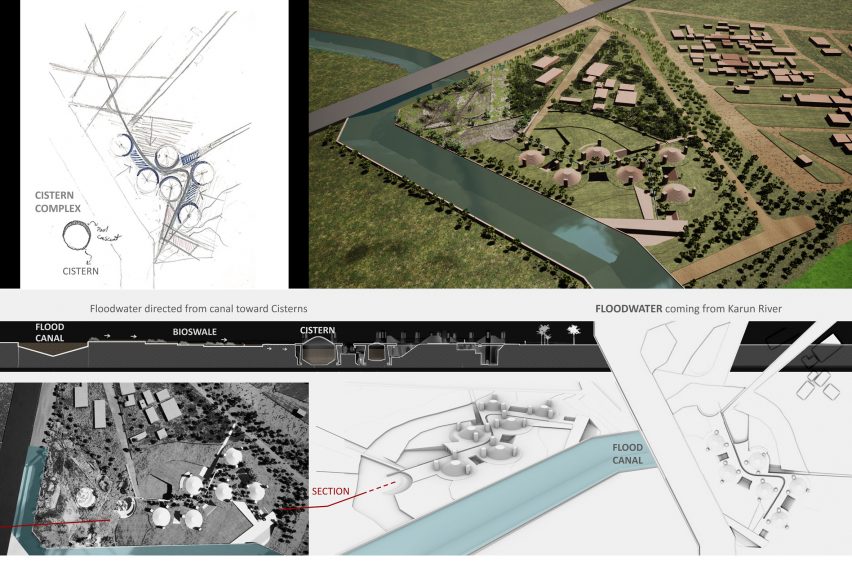
Situated in the city of Ahvaz in Iran, Tulane University student Azadeh Raoufi's project proposes a drainage strategy that retains floodwater, which was informed by ancient water collection and preservation methods.
According to the student, the city is susceptible to floods and water scarcity due to failed government interventions, overexploitation of groundwater and fluctuations in rainfall.
"The goal is to develop a bottom-up, decentralised approach to address the complex socio-cultural and environmental conditions with minimum government intervention, using local materials and vernacular architecture," said Raoufi.
"The cistern complex provides year-round potable water and a community oasis where a comfortable micro-climate is produced. The result heals human-induced environmental damage by promoting local expertise and enabling the natural capital."
Student: Azadeh Raoufi
School: Tulane University
Course: MSArch ARCH 6990 – Thesis
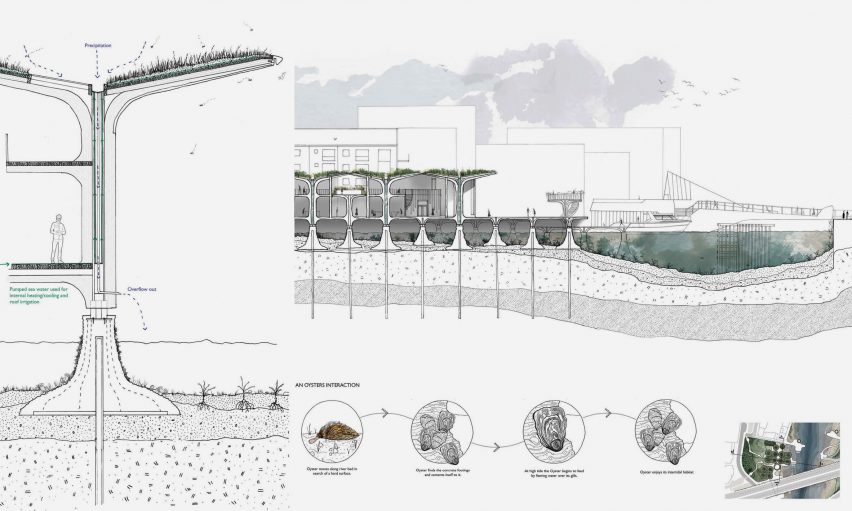
Pioneering the Symbiotic Shift – The Regeneration of Nature in Kingston Upon Hull by Emily Holland
Set in a speculative future, Emily Holland's project introduces salt marshes to the estuarine city of Kingston Upon Hull to combat rising sea levels.
According to the Oxford Brookes University student, the UK city is forecast to be submerged by the year 2050.
"This project is set in the year 2032 where the city is transitioning from conflicting with nature to approaching a future symbiosis wherein nature and urban settings can flourish," said Holland.
"The design is formed by an interconnected web of living system structures that promote salt marsh growth and biodiversity regeneration."
Student: Emily Holland
School: Oxford Brookes University
Course: Applied Design in Architecture MArchD